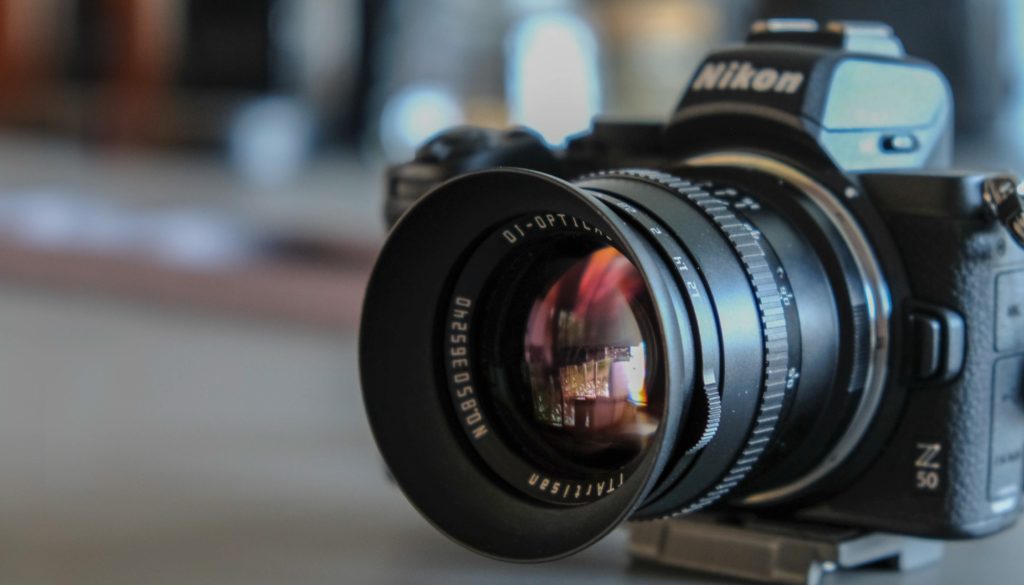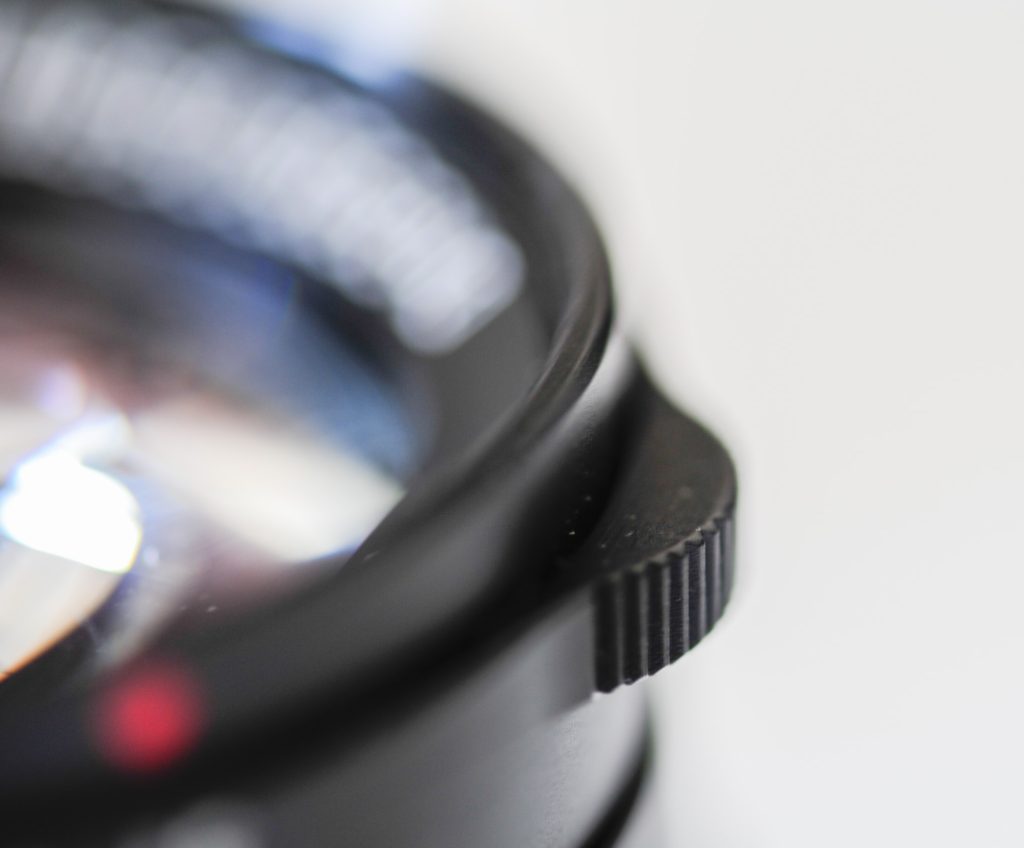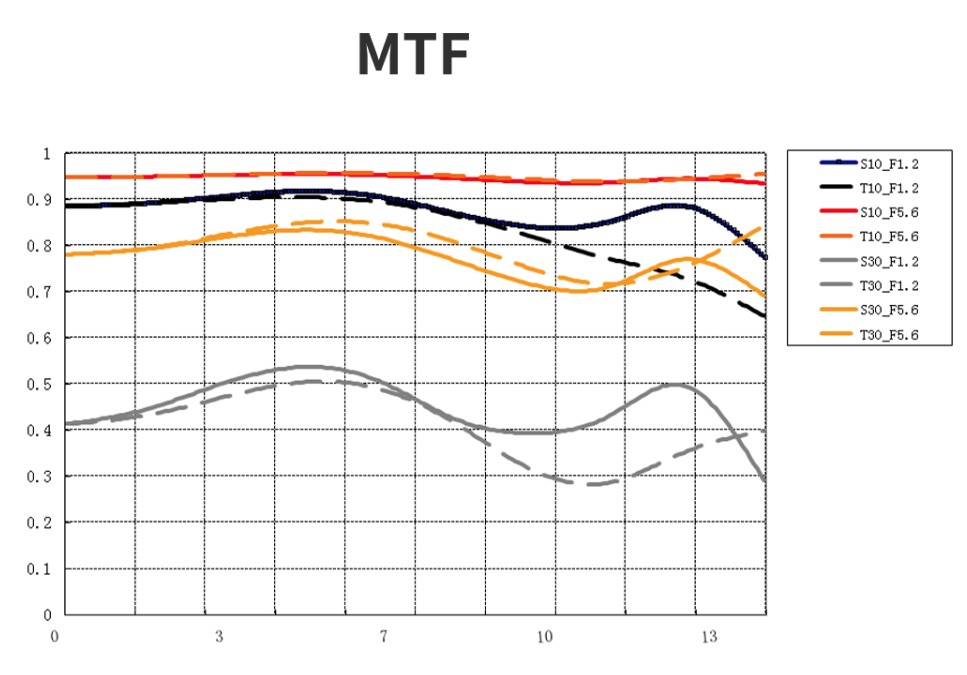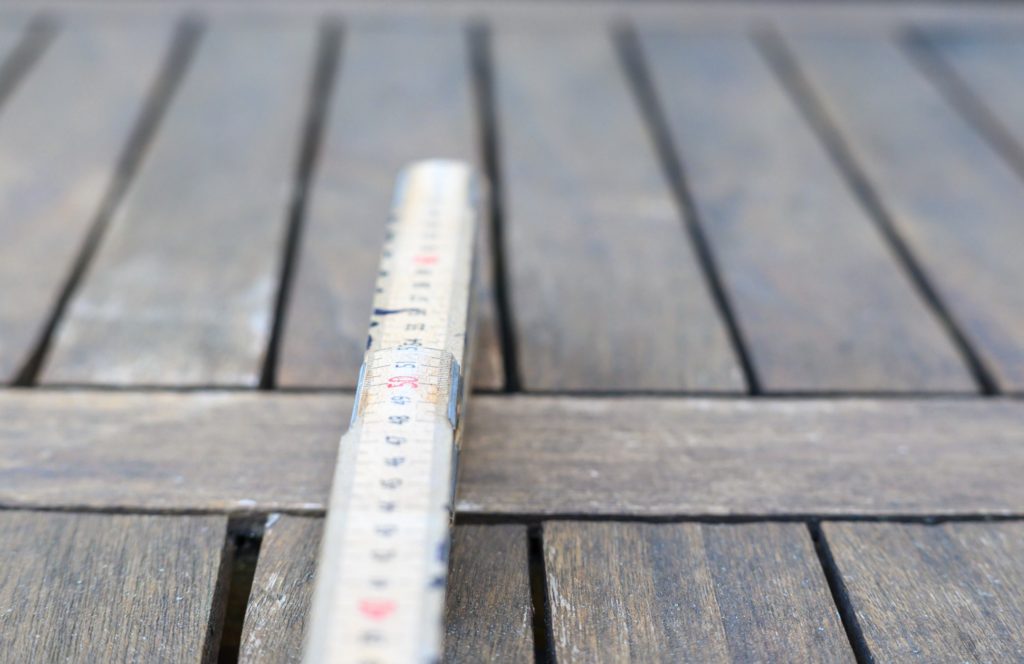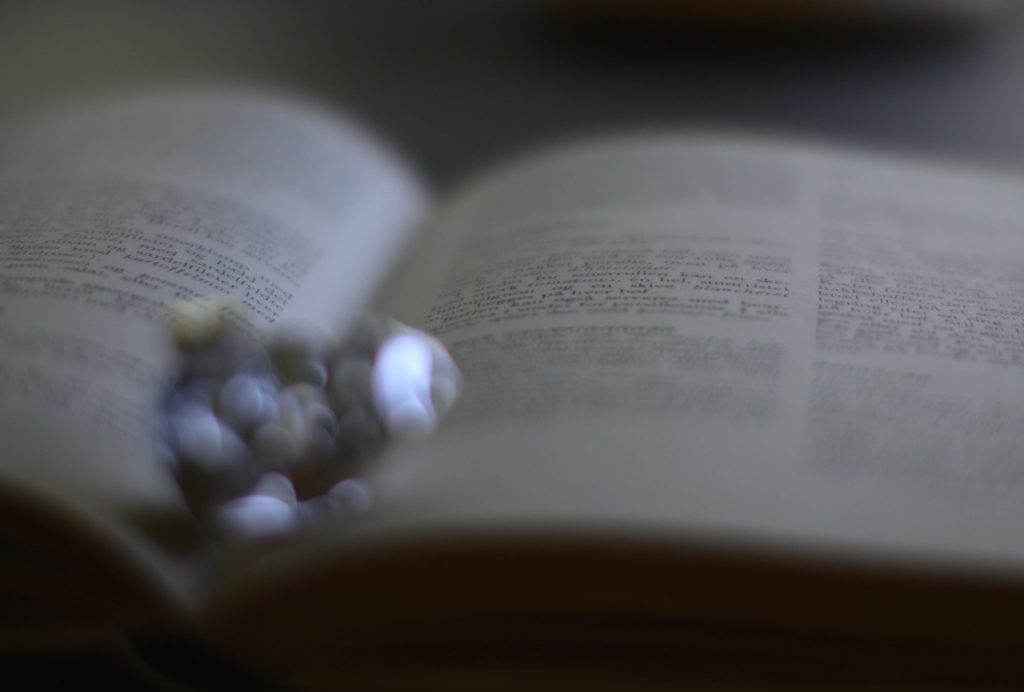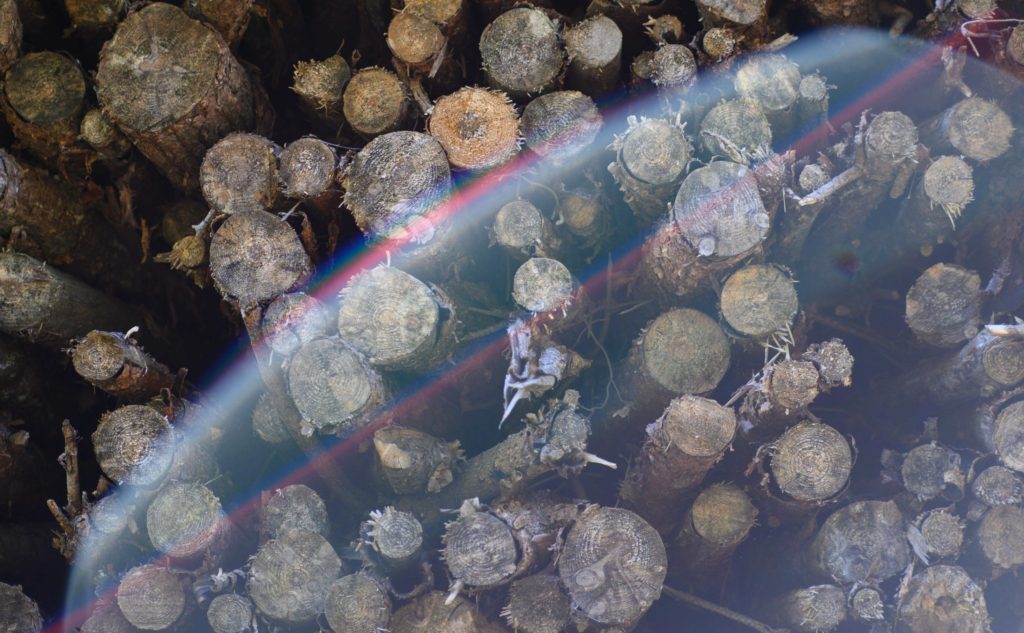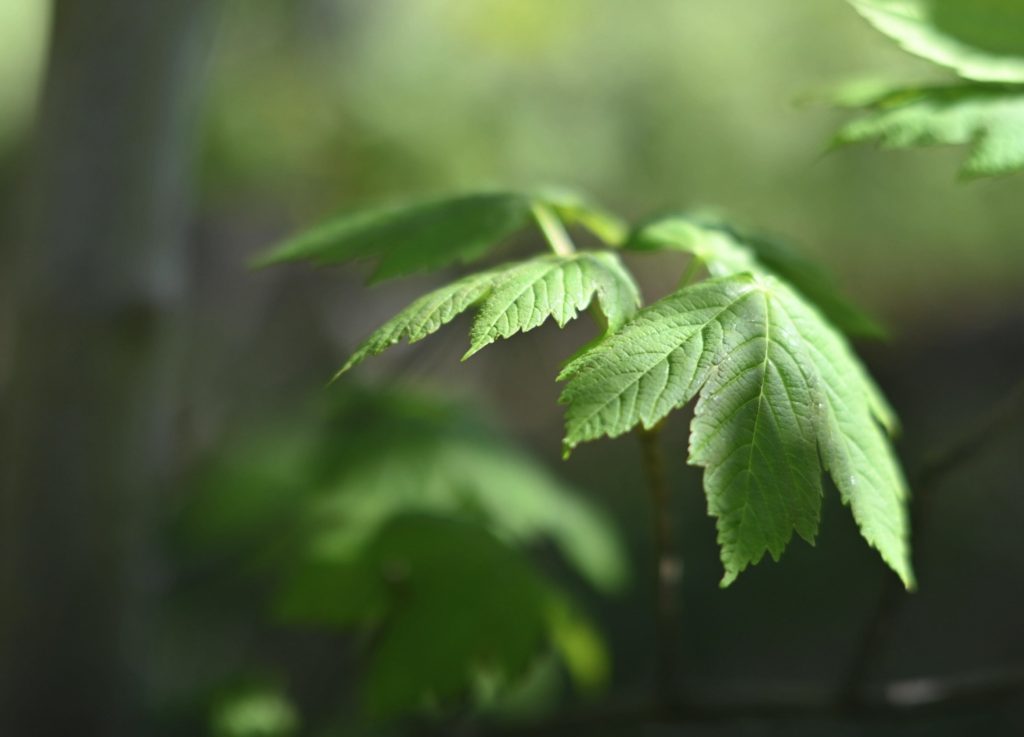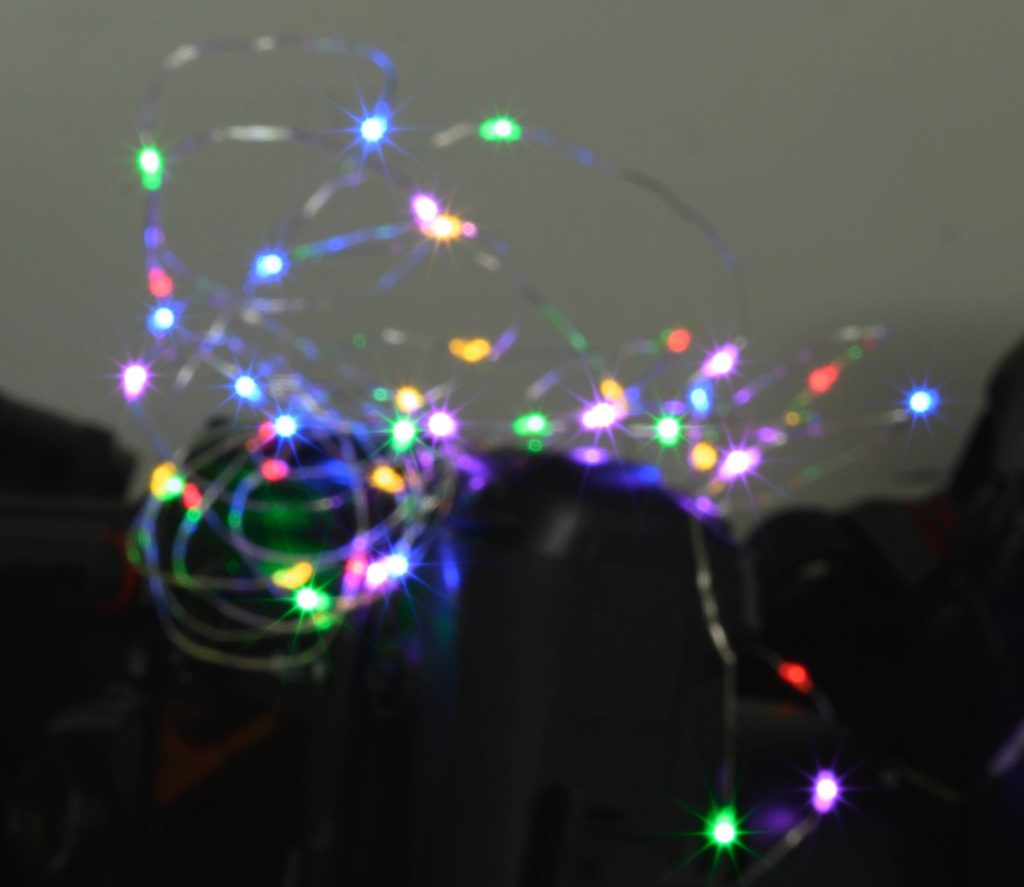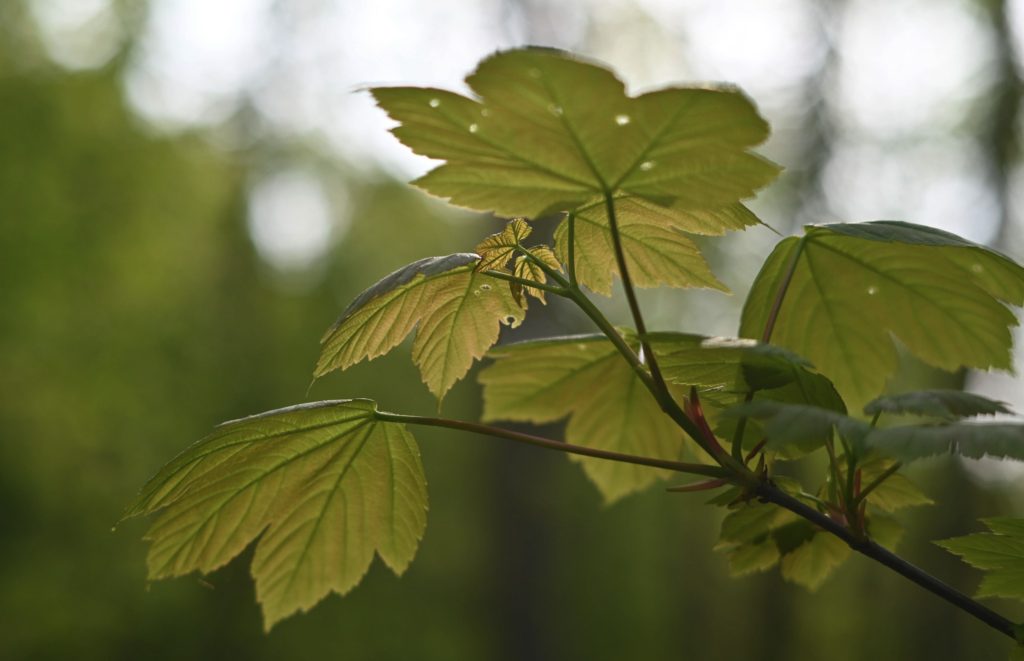Fast!
A lens at f/1.4 or f/1.2 I consider to be extremely fast, but when TTArtisan kindly sent me this lens for review, I learned that even faster lenses exist! An maximum aperture at f/0.95 enables you to isolate your subject from the background to an extreme degree! As an example: if you shoot at the minimum focus distance of 50 centimeters on a Sony a6500, the depth of field is less than 0.4 cm!! You really have to look twice to make sure your subject is in focus!
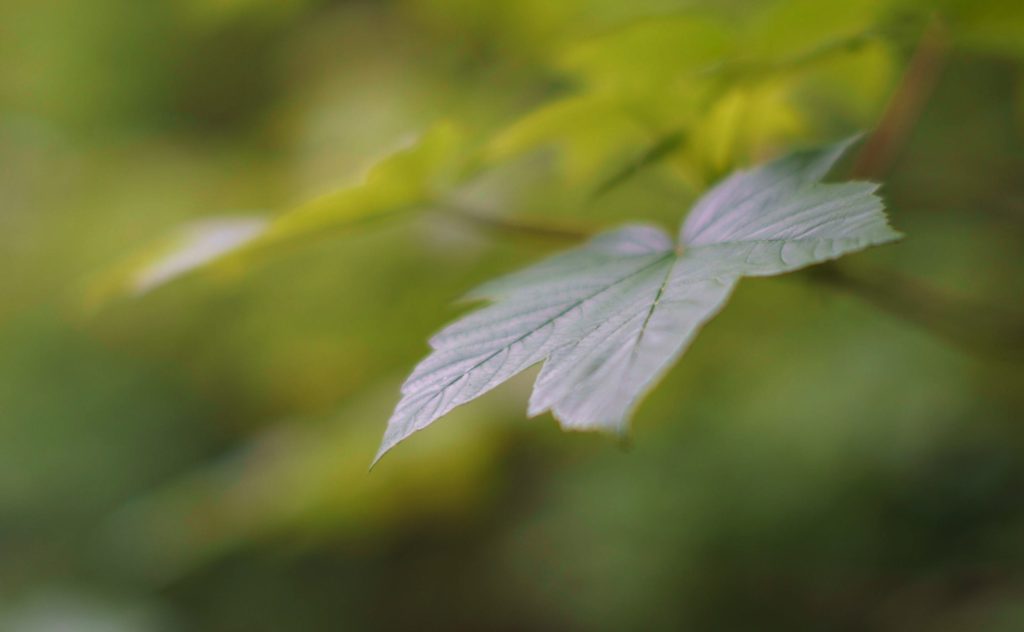
No-nonsense
The lens is all back-to-basics and no-nonsense: No autofocus, no vibration reduction and no CPU contacts! It is only metal and glass that in total makes your camera 411 grams heavier. But on the other hand it does not make your wallet that much lighter, as it retails for around 220 USD, which is a very budget friendly lens.
It comes with the Sony e-mount that fits Sony’s mirrorless cameras, both full frame and APS-C. You can mount the lens on a full frame camera as I did for this test, and to my surprise I found that it did cover the entire full frame with only little vignetting, but the sharpness in the corners was so bad, that I quickly set-up my A7Rii to crop the image size down to APS-C. In doing so, the crop factor turns the lens into 75mm FF equivalent.
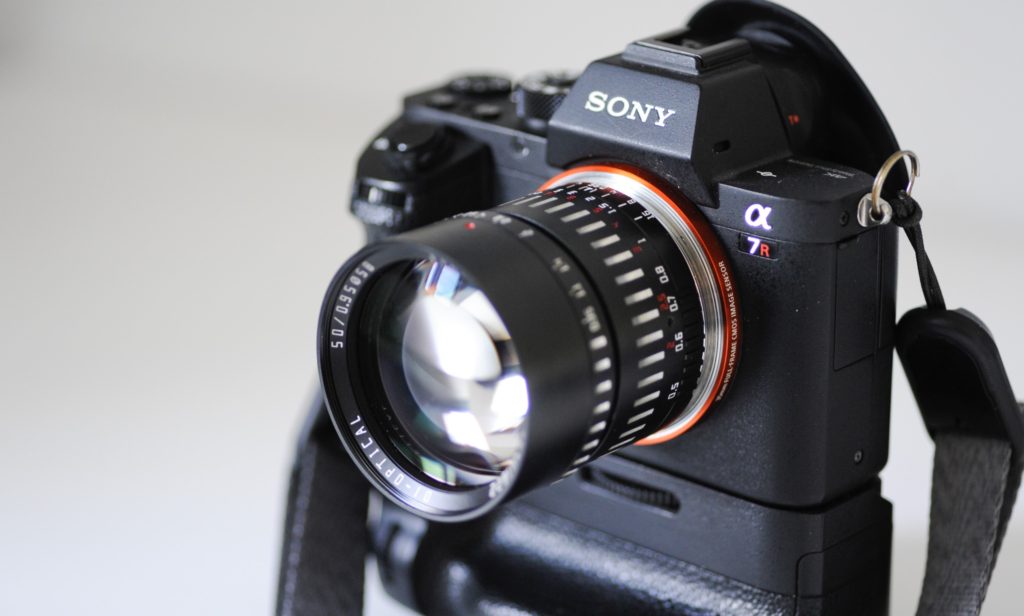
The lens is approximately 6 cm tall and 6 cm in diameter, and hence a few millimeters smaller than the e-mount itself, so I think it will look natural on all e-mount cameras, both full frame and APS-C.
The filter thread size is 58mm and allows you to mount both the metal lens cap that comes with the lens, and whatever filters you may wish. Unfortunately the lens does not have a rubber gasket around the lens mount, and hence you need to be careful to protect your camera from both water and dust.
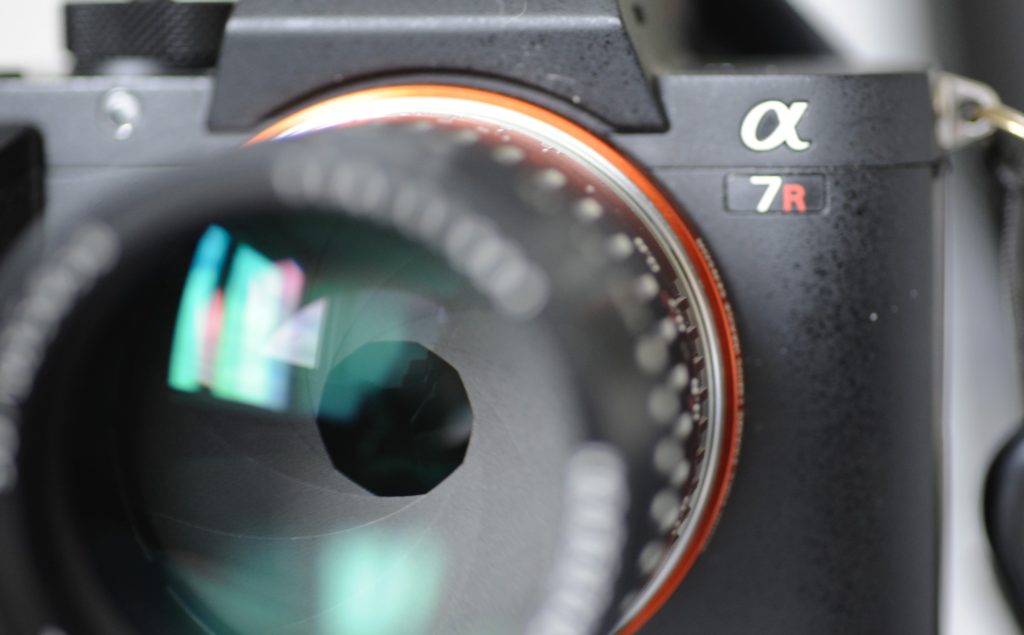
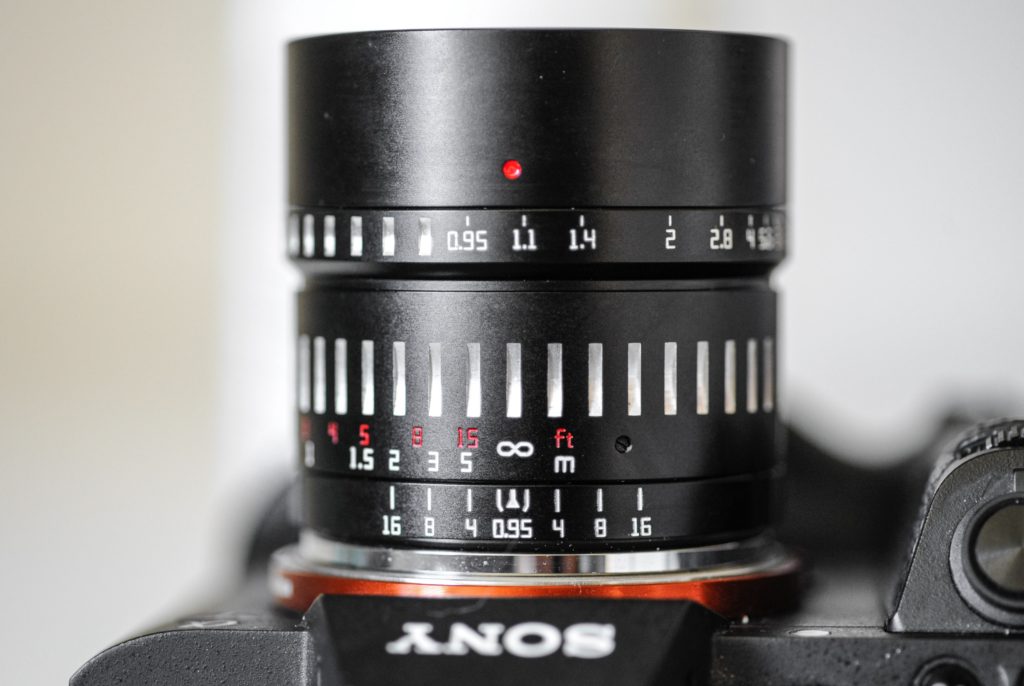
There are 10 slightly rounded aperture blades, and you can stop the lens down to f/16 as the smallest aperture, and at the other end go wild with f/0.95!! In the image above you can also see the green color in the light reflected in the front glass – that is the coating at work to counter flare.
Manual focus is controlled with a nice wide and well dampened focus throw, that turns roughly 100 degrees. I could have wished for a longer throw, especially when shooting wide open, but you’ll get used to it. The focus peaking highlights on my Sony A7Rii is brilliant aid to focus manually. And when I really want to nail focus: the ability to zoom in, in the viewfinder, comes really handy!
The vertical bars that you see on the focus throw above is not painted on the lens, but recess that has been milled out in the aluminum! This underlines the solid built quality of the lens. The distance is shown both in meters and feet, and I even found a DOF scale closest to the camera – not many use those this day and age, but to me it underlines that this lens is back to basics!
The aperture ring is rather narrow and sits just below the red dot you see in the picture above. It is also nicely dampened, but in addition the aperture ring has very soft clicks. It is also possible to position the blades between two clicks if that is to your liking. With my eye in the viewfinder, I found the aperture ring a bit difficult for my fingers to find, but you get used to it. However, a little wider aperture ring would have been nice.
So all in all a very solid built lens – all metal, all glass, and absolutely no electronics!
Sharpness
I am only too aware that many consider an MTF chart as boring as watching paint dry! But you can learn a lot about a lens studying an MTF chart, and it reveals that when wide open (fmax) the resolution is below what I would normally consider acceptable (from 0.6 to 0.7 and upwards).
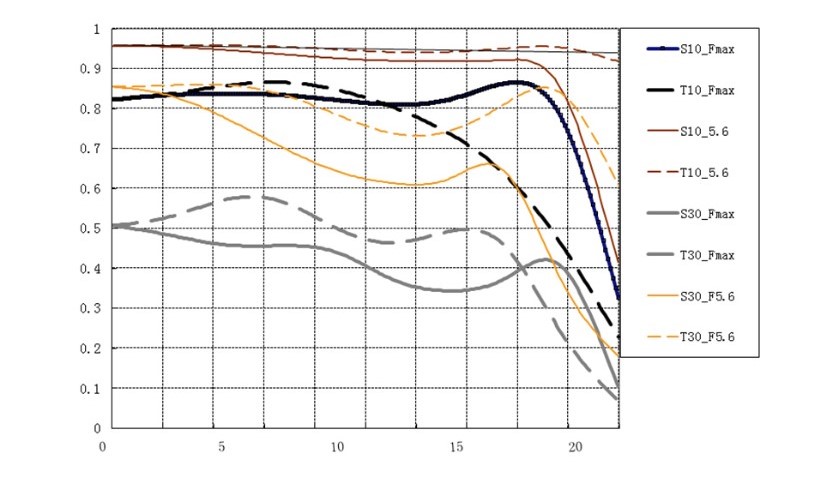
Now, had this been the corner sharpness, it would have been less of an issue, as most really only care about the center sharpness in real life, but here the lens is soft in the center wide open. It does get better fast when you stop down, but I did find that going faster than f/1.1 made the center of the frame so soft that I started noticing.
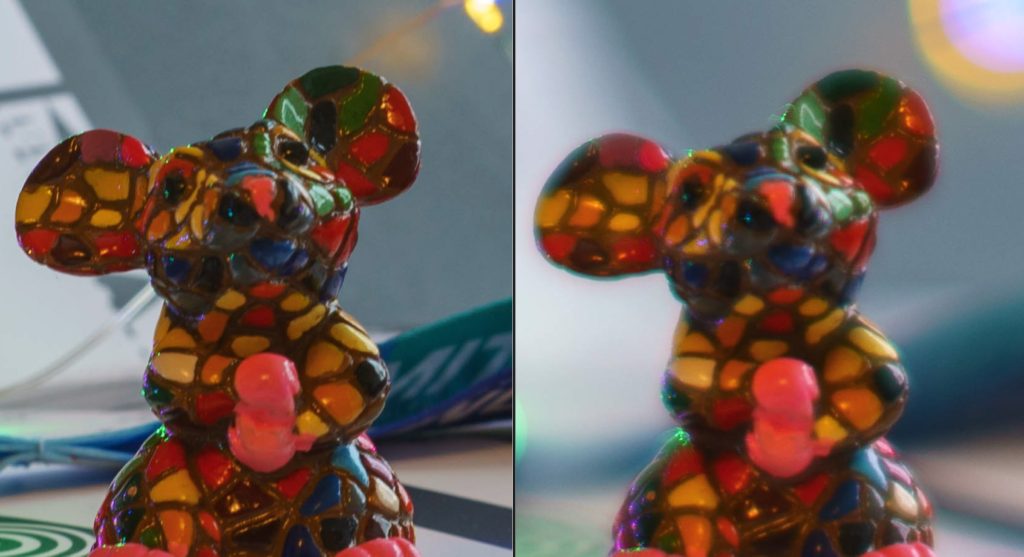
In the image above, I have zoomed in 200% with f/8 to the left and wide open to the right. I think you can see the difference in sharpness immediately.
Sometimes a bit of softness is not all that bad, especially if you shoot portraits, but for my style of shooting (landscapes, nature), the softness is an issue, and I did find that due to the softness, I only really used the lens from around f/1.2 and onwards. But mind you that it still is a very fast lens!
Aberrations
If you like me shoot very often in high contrast situations, then aberrations can be a real pain, as it gives colors of green and purple that can ruin an image or at least give more work in post processing.
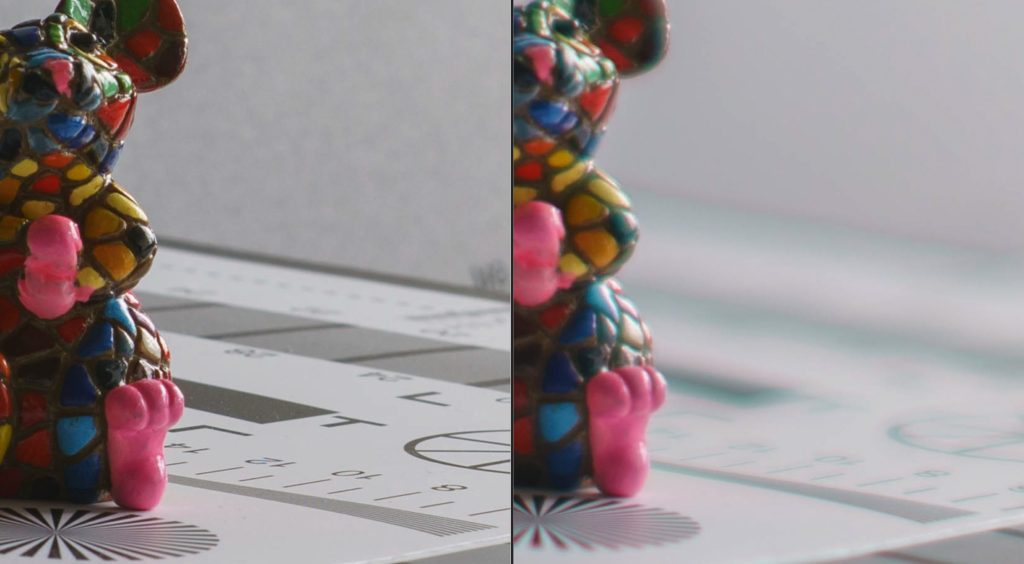
In the image above, both both zoomed in at the center of the frame, you can see that wide open to the right, there is a green tint to the black areas to the right of the mouse. To the left, at f/8, all is grey as it should be. So wide open, this lens suffers from significant amounts of aberrations. You can also see the graphics in front of the mouse has both a green and pink tint in the image to the right. And finally also the color rendition suffers from the aberrations – look at the blue color, it is clearly more “mint” to the right than to the left.
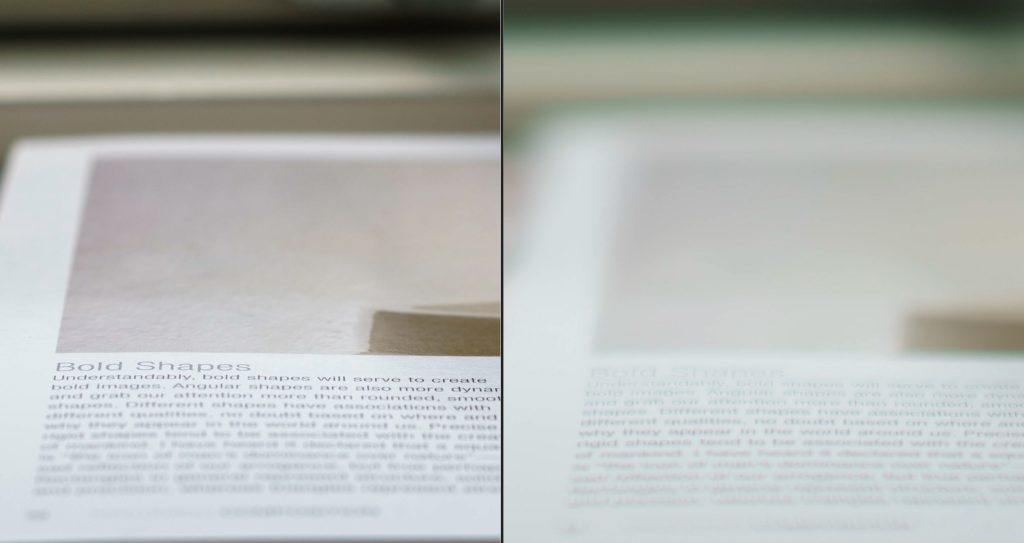
In the example above, notice the green line at the top edge of the book to the right. It is significant.
Again, this problem seems to be reduced when stopped down to f/8, but if you plan to use this lens in a high contrast scene, for example sunlight behind a model, you will likely find that high contrast areas has a green tint to it.
Distortion and vignetting
The lens has a bit of distortion, but it is so little that I doubt you will notice unless you have some dominating straight lines in your image.
Wide open the lens does show a bit of vignetting, but it quickly disappears as you stop down.
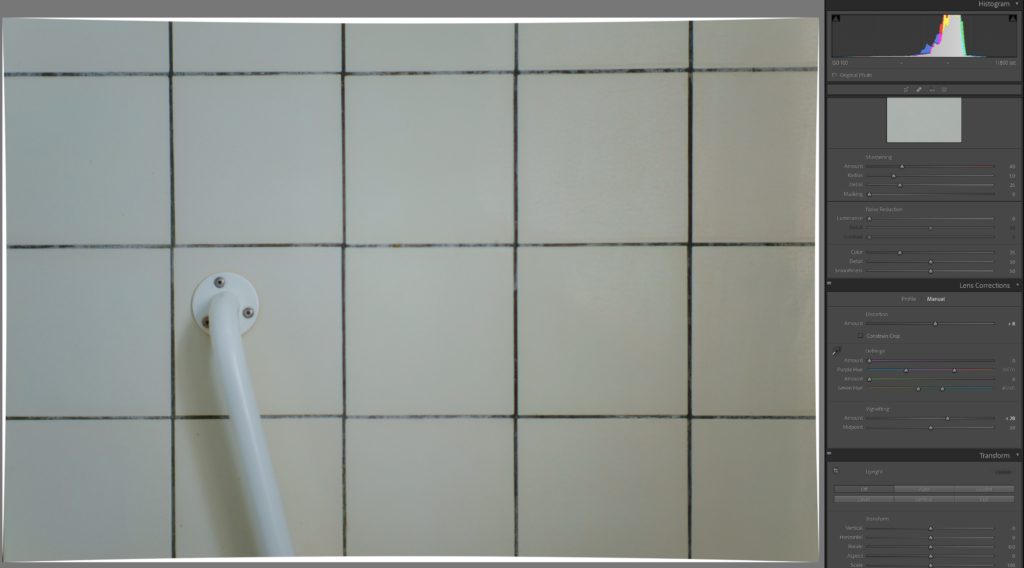
Just to give you an impression of the distortion and the vignetting, above in Lightroom I have pulled the slides to correct for both, and as you may be able to see, distortion is at +8 and vignetting at +28. Also notice how the sides of the image has white “gaps” as a consequence of the correction. Obviously, this image also needs to be cropped.
It is an easy fix in Lightroom, so I do not normally consider distortion and vignetting a problem in general. Here it is a bit more cumbersome, as the lens has no CPU contacts, and Lightroom does not know which lens it is and cannot help with applying the corrections automatically. But for most scenes and situations, I doubt you will ever notice the vignetting and distortion this lens has.
Flare control
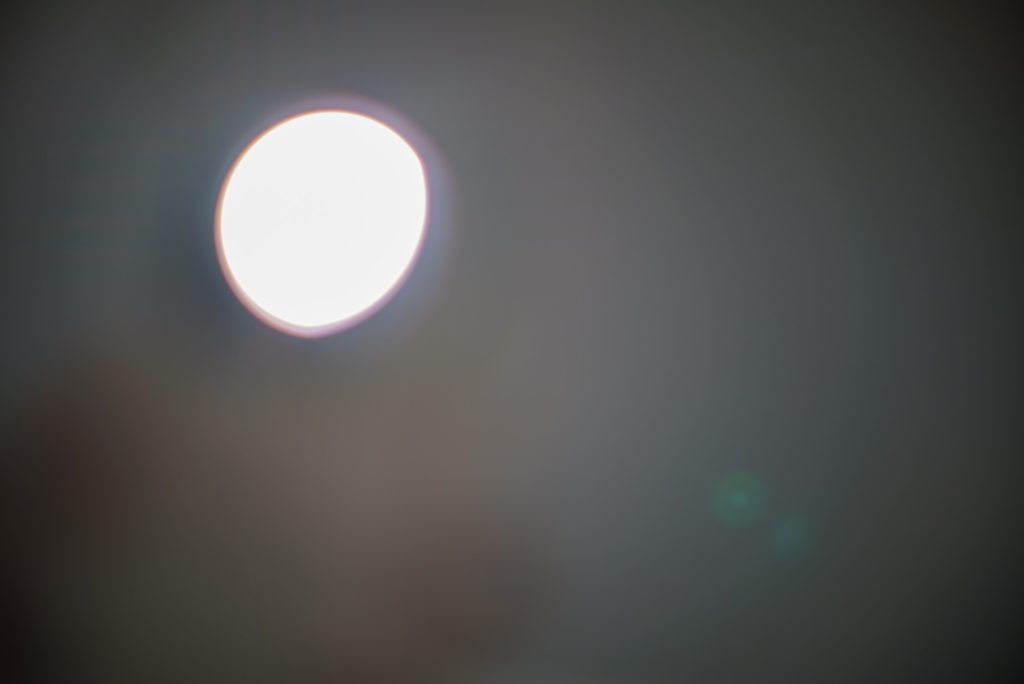
As far as I can tell, this lens as good flare control. In the image above, I have tried to stress the lens with the sharp light from my iPhone, and all the flare I could produce was the small green dots you see towards the bottom right corner.
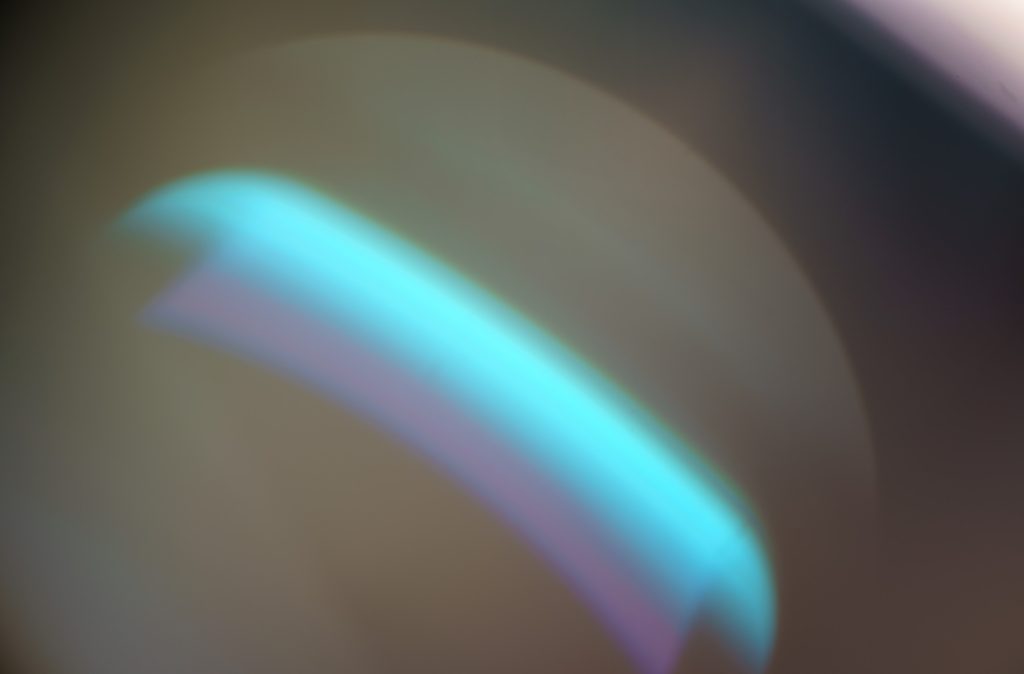
If I really go to extremes and let the light hit the lens almost vertically, then you get the result above, but it is more to see how the lens reacted. If you use a lens hood, then this angle of light will not hit the lens. So if you use a lens hood, I think that you will find that flare is well controlled in this lens.
Focus breathing
This lens suffers from focus breathing and to a significant degree. Actually so much that I think videographers will stay clear of it. As a photographer, I find this to be less of an issue.
Bokeh and sun stars
Bokeh is perhaps a bit into the personal preference territory. Some see “nervous bokeh” and “onion rings” where others just see out of focus areas. And it is probably mainly amongst photographers that bokeh is “a thing”.
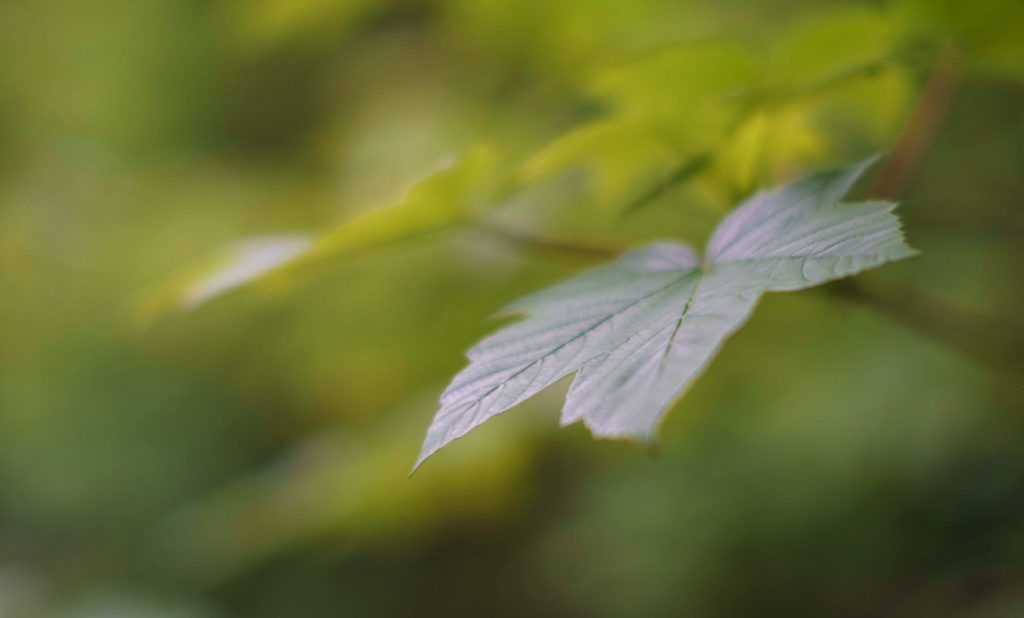
Shooting with this lens for a few weeks now, I can say that I really like the bokeh it produces, both wide open when the blades are not engaged, and stopped down then the 10 slightly rounded aperture blades start to kick in.
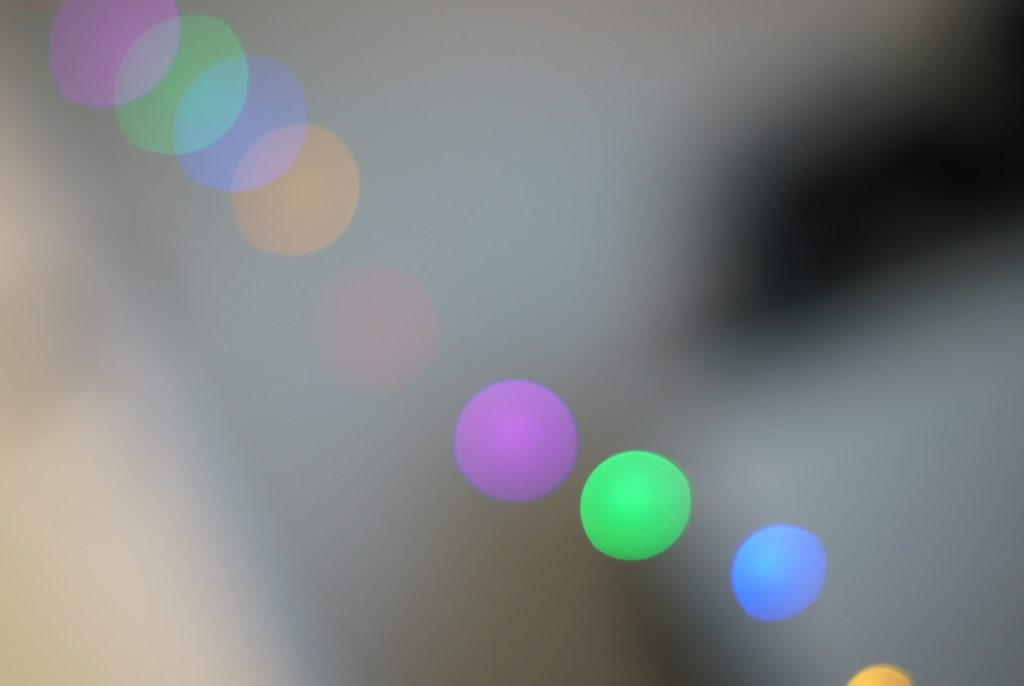
Wide open, as you would expect, nice round shapes.
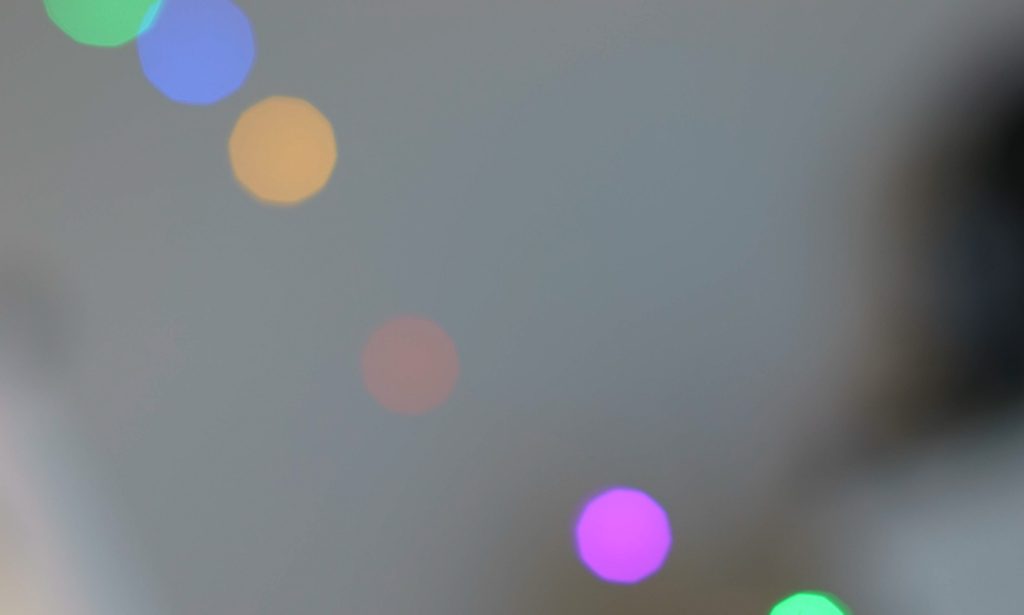
Stopped down a bit, you start to notice the shape of the aperture blades if you look carefully, but with 10 rounded blades, the shape still looks nice to me.

And finally stopped all the way down to f/16, the lens produces sun stars that to me look absolutely ok. It is not as beautiful sun stars as a lens with 100% straight blades can produce, but a very good compromise between quality of the sun stars and the bokeh.
Conclusion
The first thing to notice about this lens is it’s price bracket – 220 USD. And I think the lens performance has to be viewed in that light, and as such I think it is unfair at that price point to expect auto focus or vibration reduction, although I for completeness will list them as cons in the summary below.
I would have loved to see some CPU contract to help me get EXIF information into Lightroom, but it seems to me the TTArtisan philosophy is to stay clear of any electronics, and just produce solid built glass that will last. And when you hold this lens in your hand, you are clearly left with the impression that it will last – a simple construction, all metal, all glass, well built and with no electronics.
There are two areas where I struggle with this lens.
One is the softness and the aberrations wide open. I find that in real life I only use the lens from around f/1.4 and onwards, and the space from f/0.95 to /f1.4 is simply too bad for me to usable. In other words, the super fast lens is for me more on paper and in the specs sheet, than it is in real life. It is a very usable lens stopped down a bit, but not wide open. So if you got attracted to this lens due to its crazy fast aperture, then I caution you to make sure the softness and the aberrations in the wide end is acceptable to you.
The other is the aberrations throughout the aperture range. It is there, and it is noticeable in high contrast scenes. If you don’t shoot much in high contrast, then this may not be an issue for you, but I do, and I find it annoying to spend time in Lightroom, removing purple and green colors where light meets darkness.
If you can live with the above two, then this lens is a steal. A fast “f/1.4 lens” for your APS-C camera that will not break the bank. It is sharp and with good contrast if you stay clear of shooting wide open. So if you can accept that and you don’t mind manual focus, then this lens should definitely be on your short list of nifty-fifty primes for your Sony APS-C camera.
You can find a small sample if images shot with this lens here, if you want to see better resolution samples than what is in this blog.
Pro
– Price / value for money
– Build quality
– Fast lens (f/0.95)
– Bokeh
– Sun stars stopped down
– Sharpness/contrast stopped down
– Vignetting/distortion not too bad
– Flare control
Cons
– Chromatic aberrations
– Lack of CPU contacts (no EXIF info)
– Relatively short focus throw for an all manual lens
– No auto focus (or VR)
– Sharpness and contrast wide open
– Focus breathing
– No weather sealing
Related reading
Review: TTArtisan 50mm f/1.2 lens for the Nikon APS-C Z-mount
Review: Sony RX100 M3 = value-for-money!
Video link

